For bird enthusiasts and casual backyard observers alike, a birdbath represents more than just garden décor – it’s a vital resource that supports local wildlife while bringing the joy of birdwatching right to your doorstep. Birds need consistent access to fresh water not just for drinking but also for bathing, which helps them maintain their feathers in optimal condition for flight and insulation. Selecting the perfect birdbath involves more than just aesthetics; it requires consideration of bird preferences, seasonal needs, and practical maintenance concerns. Whether you’re a seasoned birder looking to upgrade your current setup or a newcomer eager to attract feathered visitors to your outdoor space, this comprehensive guide will help you navigate the many options available and create a water feature that birds will flock to year-round.
Why Birds Need Birdbaths Beyond Just Looking Pretty
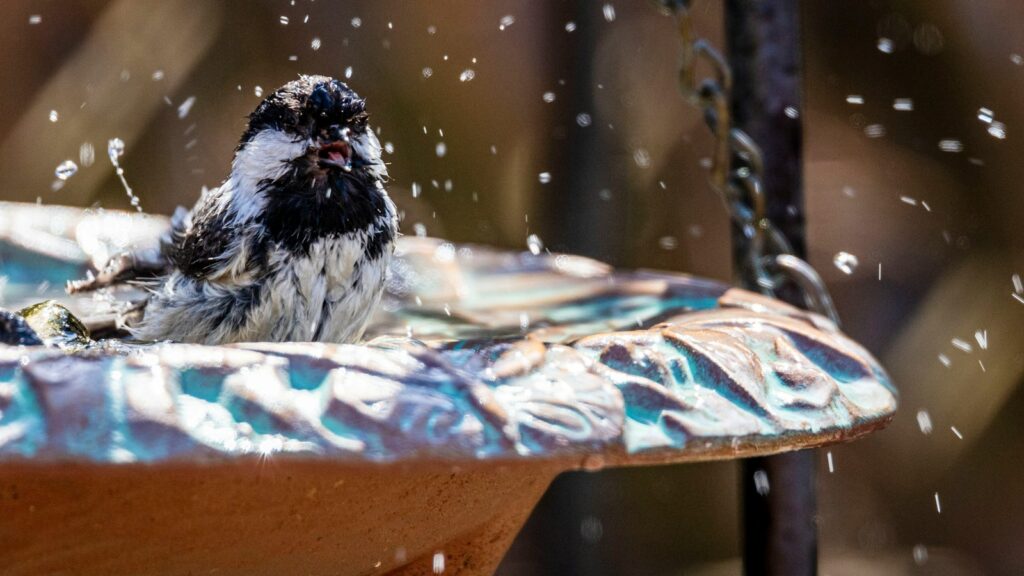
Birds require regular access to water for multiple essential biological functions, making birdbaths far more than just decorative garden elements. Primarily, birds need water for hydration, especially during hot summer months when natural water sources may dry up or during winter when water freezes. Beyond drinking, birds use water for bathing, which is crucial for maintaining healthy feathers – regular bathing helps remove dirt, dust, and parasites while distributing essential oils across their plumage. This maintenance directly impacts a bird’s ability to fly efficiently and stay properly insulated against environmental conditions. Additionally, birds often socialize around water sources, making birdbaths important community gathering spots that facilitate species interaction and communication behaviors that might otherwise go unobserved in your backyard.
The Ideal Depth and Design for Safe Bird Bathing
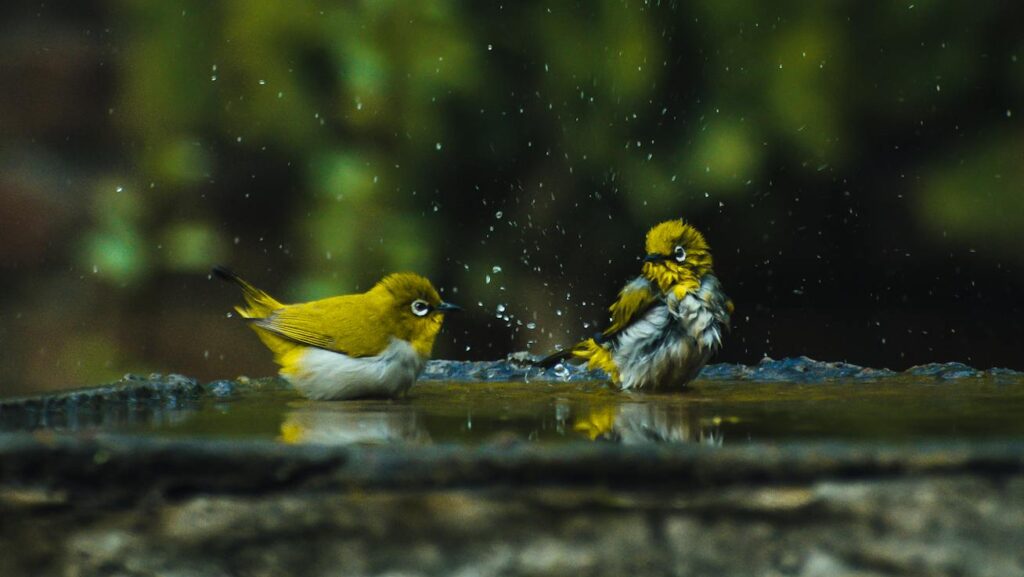
The perfect birdbath strikes a balance between accessibility and usefulness, with depth being perhaps the most critical design factor. Most birds prefer shallow water, ideally with a maximum depth of around 2 inches in the deepest section, gradually becoming shallower toward the edges to accommodate birds of different sizes. Textured surfaces are vastly preferable to slippery ones, as they provide secure footing while birds drink and bathe – rough concrete, textured ceramic, or baths with pebble bottoms all offer excellent traction. The ideal birdbath also features gently sloping sides rather than steep walls, allowing birds to wade in gradually rather than forcing them to commit to deep water immediately. Additionally, including a central raised area or island can provide resting spots and make smaller birds feel more secure while using the bath.
Material Matters: Comparing Birdbath Construction Options
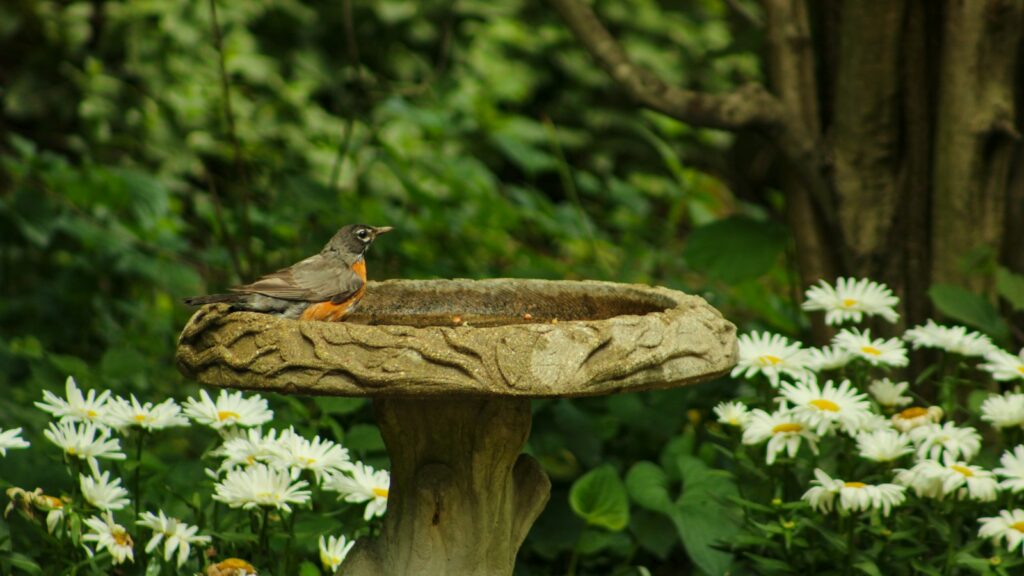
The material of your birdbath significantly impacts its durability, maintenance requirements, and appeal to birds. Concrete birdbaths offer exceptional stability and durability, typically featuring textured surfaces birds appreciate, though they can be heavy to move and may crack in freezing temperatures if not properly protected. Ceramic and glazed options provide stunning aesthetic appeal and easy cleaning but can be fragile and prone to breakage, especially in regions with temperature fluctuations. Plastic and resin models excel in lightweight portability and affordability, making them ideal for beginners, though they may need to be weighted down to prevent tipping in windy conditions. Metal birdbaths, particularly copper varieties, offer natural antimicrobial properties that help keep water cleaner longer, but can heat up quickly in direct sunlight, potentially making the water uncomfortably hot for birds. Stone birdbaths blend beautifully into natural landscapes and offer excellent stability, though like concrete, they require winter protection in freezing climates.
Placement Strategies to Maximize Bird Visits
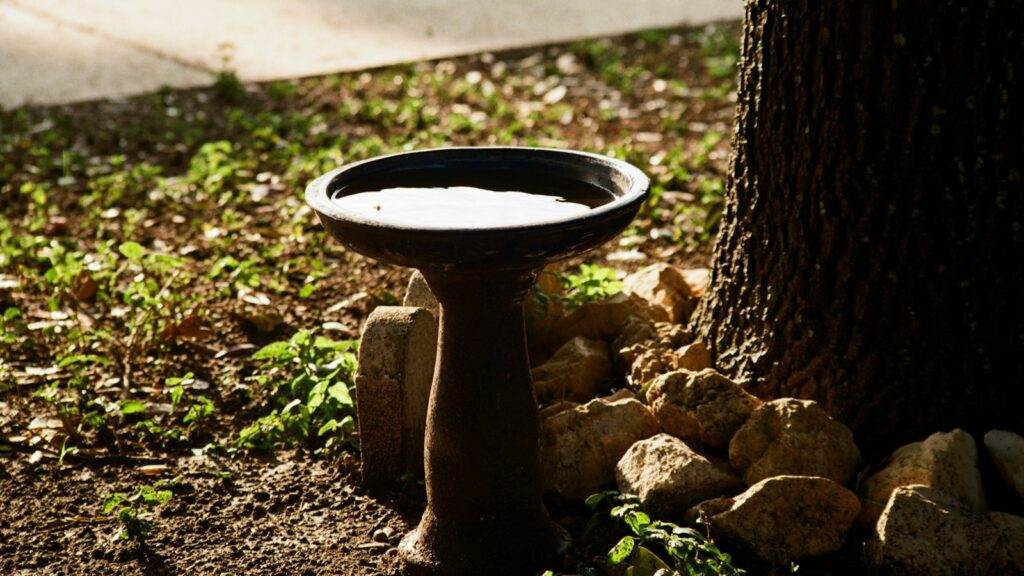
Strategic placement of your birdbath can dramatically increase its attractiveness to birds while minimizing potential dangers. Position your bath in a partially shaded location to keep water cooler and reduce algae growth, while still providing birds with clear sightlines to spot approaching predators. Keep the bath within 10-15 feet of trees or shrubs that can serve as emergency escape routes and resting spots for birds who want to preen after bathing. Avoid placing birdbaths directly under feeders where seeds and droppings can quickly contaminate the water, requiring more frequent cleaning. Elevating your birdbath on a pedestal can provide additional protection from ground predators like cats, though ground-level baths may attract a greater diversity of species, including those that rarely visit elevated water sources. Consider installing your bath where you can easily observe it from inside your home, enhancing your birdwatching enjoyment while still maintaining enough distance that your presence doesn’t deter shy species.
Seasonal Considerations for Year-Round Bird Hydration
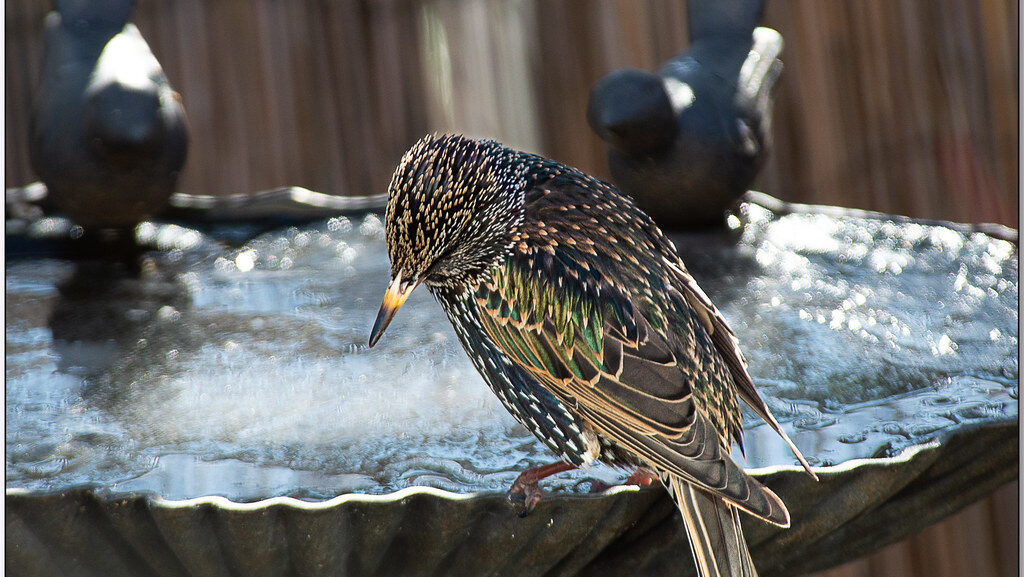
Birds need water throughout the year, but their requirements and the challenges of providing it vary significantly with the seasons. During summer months, frequent water refreshing becomes essential as higher temperatures accelerate algae growth and evaporation, while also increasing birds’ hydration needs. Fall migration periods may bring unusual species to your bath, making this an excellent time to ensure consistent water availability to support traveling birds. Winter presents the challenge of freezing temperatures, requiring either heated birdbaths, de-icers, or commitment to manually breaking ice and refreshing water multiple times daily in colder regions. Spring brings nesting season, when adult birds need reliable water sources not just for themselves but to support their growing families, making this period particularly important for maintaining clean, fresh water. Adjusting your maintenance routine to match these seasonal demands ensures your birdbath remains a valuable resource for your feathered visitors regardless of the calendar.
Water Movement: Why Birds Prefer Moving Water
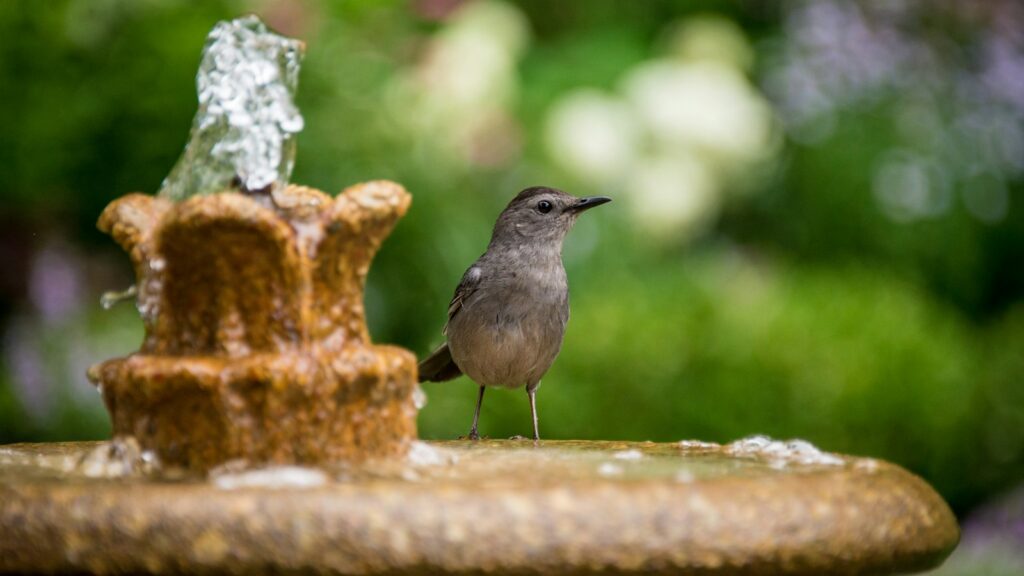
Birds are instinctively attracted to moving water, making this feature a powerful enhancement to any birdbath setup. Moving water catches birds’ attention visually as it reflects light and creates movement patterns that can be spotted from considerable distances during flight. From a practical perspective, moving water resists freezing longer than still water in cold temperatures and inhibits mosquito breeding by preventing larvae from developing. The sound of trickling or splashing water serves as an auditory attractant, drawing birds from surprisingly far away, particularly during migration seasons when they’re actively seeking resources. Adding movement can be achieved through various mechanisms, from sophisticated solar-powered fountains to simple drip systems created with a recycled plastic container and small hole that allows water to slowly drip into the bath, creating ripples that will attract considerably more birds than still water alone.
Maintenance Routines to Keep Your Birdbath Healthy
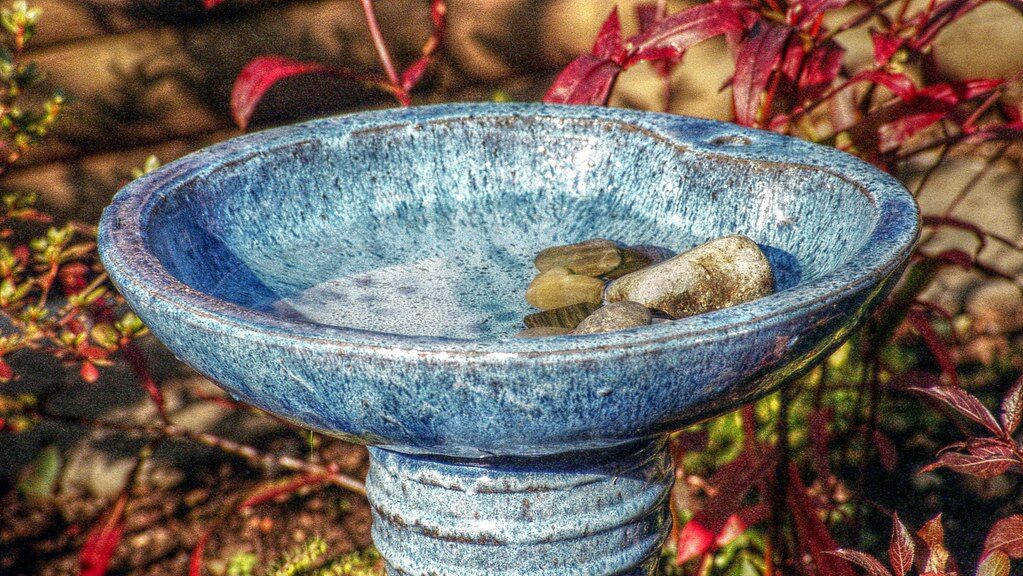
Regular maintenance is essential for keeping your birdbath both attractive to birds and beneficial to their health. Establish a routine of completely emptying and scrubbing the bath at least twice weekly during warm months and whenever debris accumulates, using a stiff brush and a solution of nine parts water to one part white vinegar to safely remove algae and bacteria without introducing harmful chemicals. Rinse thoroughly after cleaning to remove all vinegar residue before refilling with fresh water. Beyond regular cleaning, inspect your birdbath frequently for cracks, sharp edges, or unstable positioning that could endanger birds. In regions with hard water, address mineral deposits by periodically scrubbing with a paste made from baking soda and water, which safely removes buildup without damaging most birdbath materials. During prime mosquito breeding seasons, consider changing water daily or adding safe water agitators since mosquitoes require still water for at least 24 hours to successfully reproduce.
Enhancing Your Birdbath with Natural Elements
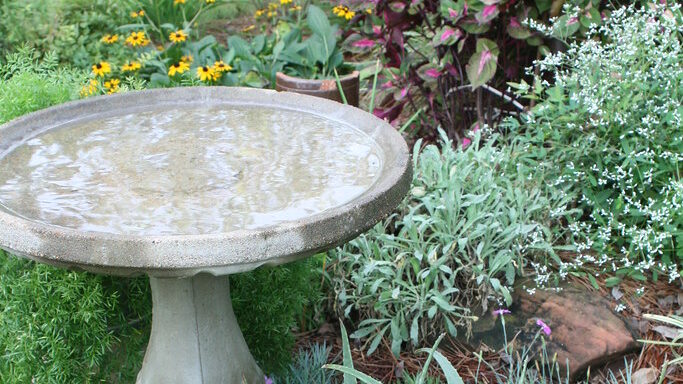
Incorporating natural elements around and within your birdbath can dramatically increase its attractiveness to birds while improving its functionality. Adding a few flat stones or pebbles that rise slightly above the water level provides valuable perching spots where smaller birds can stand while drinking or rest between bathing sessions. Surrounding your bath with native plants creates a more complete habitat, offering natural cover that makes birds feel secure enough to use the water feature regularly. Consider adding a handful of clean twigs or small branches near the edge of the water, which some birds use as “stepping stones” to gradually enter the bath rather than diving in directly. For deeper baths, creating a graduated entry point using river rocks not only adds aesthetic appeal but functionally transforms a potentially inaccessible bath into one suitable for birds of various sizes. These natural additions make your birdbath feel less like an artificial addition to the landscape and more like an integrated part of the environment birds naturally seek out.
Addressing Common Birdbath Problems and Solutions
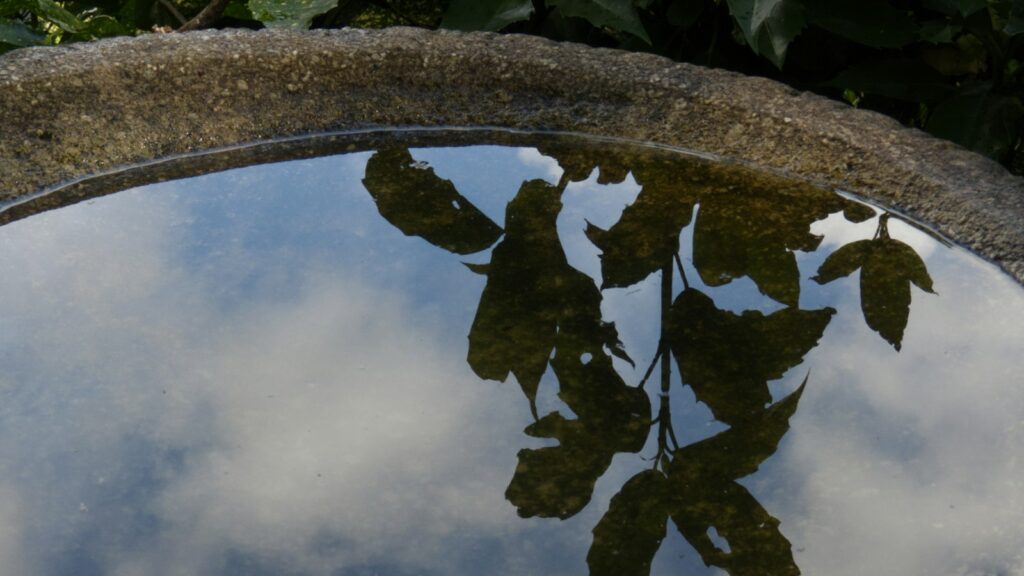
Even well-designed birdbaths can present challenges that require troubleshooting to maintain their effectiveness. If birds aren’t visiting your bath despite proper setup, try adding movement to the water, relocating to a more protected area, or placing shiny objects nearby that mimic the reflection of water to initially attract attention. Persistent algae problems can be addressed by moving the bath to a shadier location, adding copper elements that naturally inhibit algae growth, or installing water circulation systems. For baths that frequently tip over, either secure the base with stakes or weights, or consider switching to a heavier model or one with a wider base. Predator concerns can be mitigated by positioning the bath away from hiding spots where cats might lurk while ensuring escape routes are available for bathing birds. If freezing is an issue during winter, explore heated options, solar solutions, or establish a routine of breaking ice and refreshing water multiple times daily to maintain this crucial resource.
DIY Birdbath Projects for the Creative Enthusiast
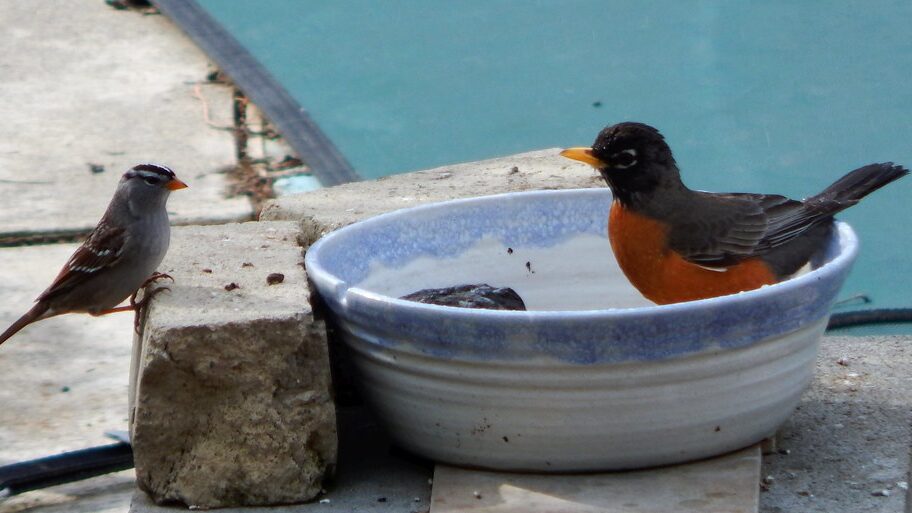
Creating your own birdbath allows for customization while often saving money compared to commercial options. A simple yet effective DIY birdbath can be crafted from a terracotta saucer (the type used under planters) placed on an inverted flowerpot or secure base, with added pebbles or stones for perching and texture. Repurposed household items like large serving bowls, shallow ceramic dishes, or even upturned garbage can lids can be transformed into effective birdbaths when properly mounted and stabilized. For the more ambitious, concrete birdbaths can be cast using large rhubarb or hosta leaves as molds, creating naturally textured, unique designs that birds appreciate for secure footing. Upcycled glass light fixtures mounted on posts or repurposed metal structures can create artistic birdbaths that become garden focal points while serving wildlife. Whatever materials you choose, ensure your creation maintains the critical 1-2 inch maximum depth with gradually sloping sides, textured surfaces for grip, and stability enough to withstand curious birds and weather conditions.
Attracting Specific Bird Species with Specialized Setups
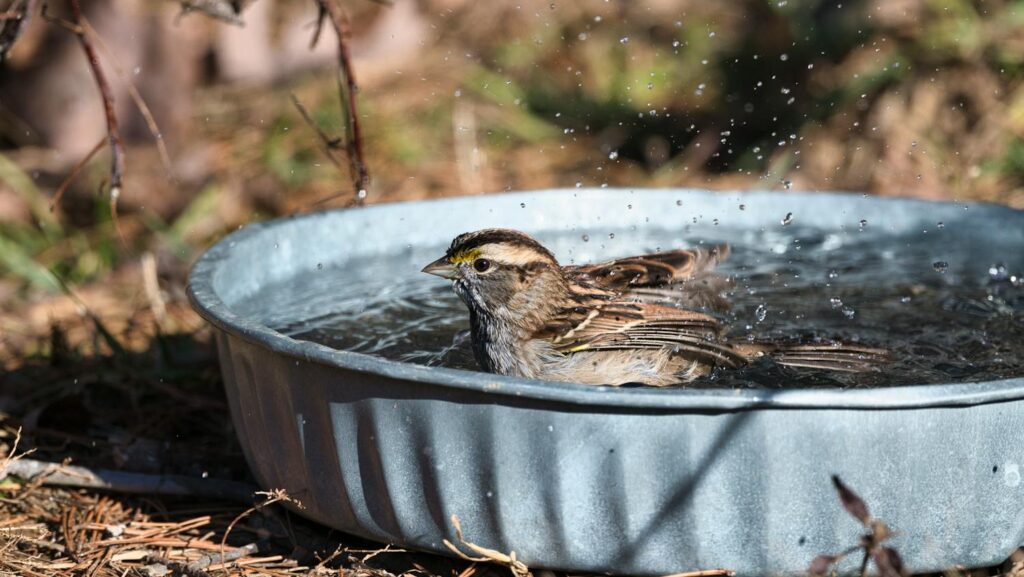
Different bird species have distinct preferences for water features that can be accommodated through specialized birdbath setups. Warblers and other insect-eating birds are particularly attracted to moving water features that mimic the sound of raindrops or flowing streams, making dripper attachments or small fountain elements especially effective for these species. Ground-feeding birds like sparrows, juncos, and towhees often prefer ground-level baths that mimic natural puddles, while more cautious species like cardinals and jays typically favor elevated baths with clear sightlines and nearby escape routes. Larger birds such as robins enjoy deeper bathing areas where they can fully immerse their bodies, while tiny species like hummingbirds are attracted to very shallow water or even just wet leaves and mist features. By observing which local species visit your yard and researching their specific preferences, you can modify or augment your birdbath setup to create a truly welcoming environment for the particular avian community in your area.
Combining Birdbaths with Other Wildlife-Friendly Features
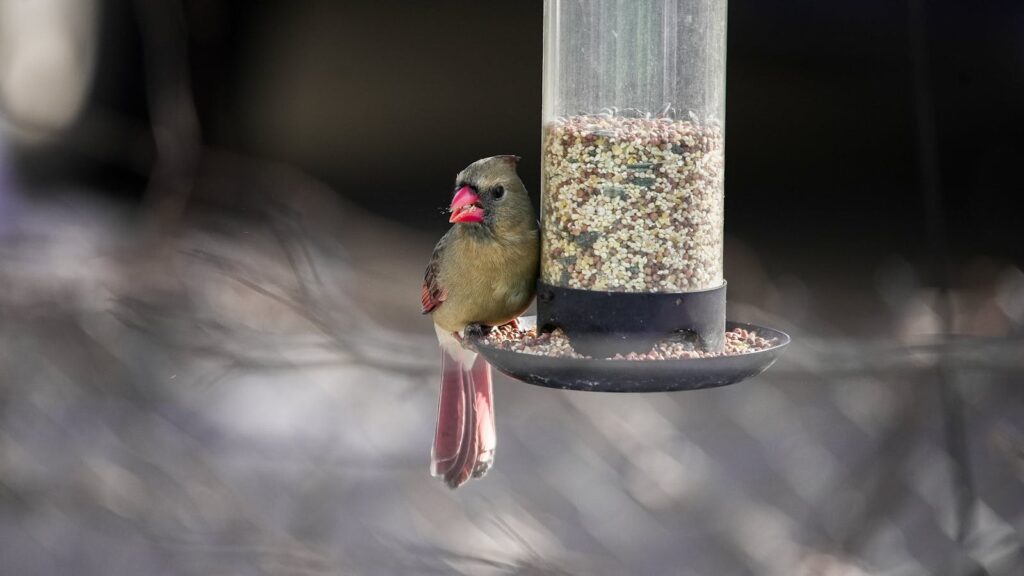
Creating a comprehensive wildlife habitat that includes complementary features alongside your birdbath can dramatically increase both the diversity and frequency of bird visits. Position native plant species near your birdbath to provide natural cover and perching options, with particular emphasis on berry-producing shrubs that offer both food and shelter. Consider installing bird feeders at appropriate distances from your bath – close enough to create a complete resource station but far enough that seed husks and droppings don’t contaminate the water. Nesting boxes positioned within sight of water sources offer added convenience for breeding birds, especially during nesting season when adults need efficient access to all resources. Adding butterfly-friendly plants creates a more complete ecosystem that attracts a wider variety of wildlife, including the insects that many bird species depend on for protein. This integrated approach transforms your yard from having isolated bird-friendly elements into a cohesive habitat that meets multiple needs for your feathered visitors.
Health and Safety: Keeping Birds Protected at Bath Time
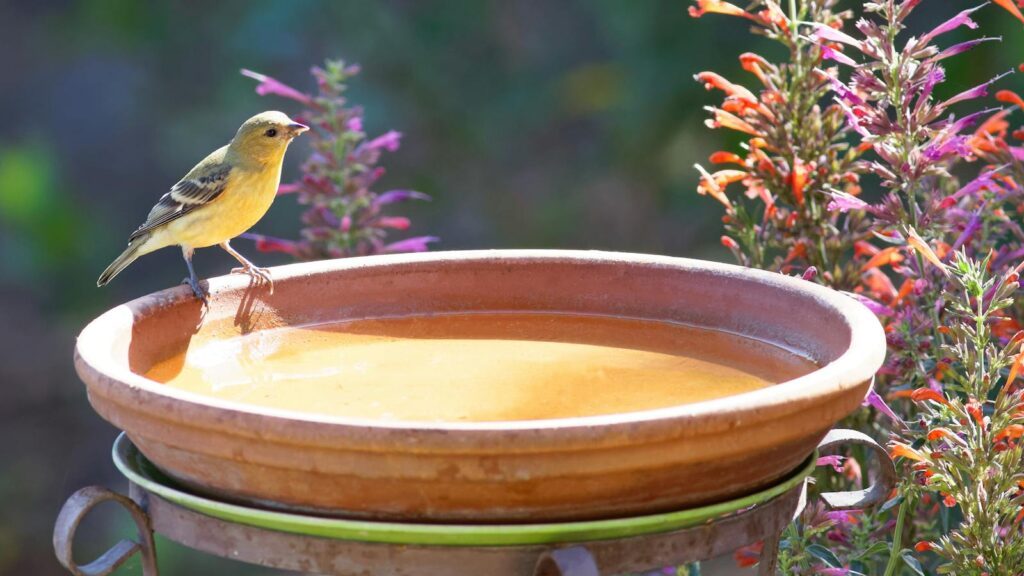
Maintaining a birdbath comes with responsibility for the health and safety of your feathered visitors. Never add chemicals, soaps, or oils to birdbath water, even in small amounts, as these can damage birds’ feathers and compromise their natural waterproofing and insulation properties. Monitor for signs of excessive droppings or feathers in the water, which can indicate either high usage requiring more frequent cleaning or potentially sick birds visiting your bath. If you notice signs of ill birds, temporarily empty the bath, conduct a thorough disinfection with a mild bleach solution (1 part bleach to 9 parts water), rinse exceptionally well, and allow it to dry completely before refilling. Position your bath to minimize collision risks with windows by either placing it within three feet of glass (too close for birds to build up flight momentum) or more than 30 feet away. During known disease outbreaks affecting local bird populations, follow wildlife agency recommendations which may include temporarily removing water sources to prevent congregation of potentially infected individuals.
Conclusion
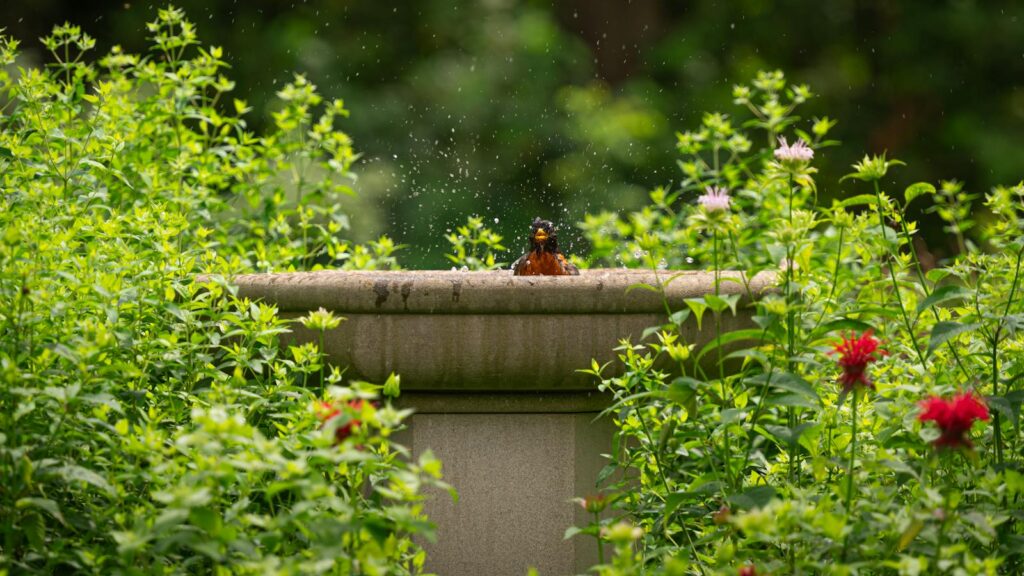
A thoughtfully selected and properly maintained birdbath serves as more than just a garden accent—it becomes a vital resource hub that supports local bird populations while bringing the joys of nature observation right to your doorstep. By carefully considering factors like depth, material, placement, and seasonal adaptations, you can create a water feature that meets birds’ biological needs while fitting beautifully into your outdoor space. Remember that the perfect birdbath is one that balances bird preferences with your practical maintenance capabilities, ensuring consistent access to clean water throughout the year. Whether you choose a commercial model or craft your own DIY creation, your efforts to provide this essential resource will be rewarded with the delightful presence of birds that might otherwise pass your property by. As you watch birds drinking, bathing, and socializing at your birdbath, you’ll gain not only the pleasure of their company but also the satisfaction of knowing you’ve made a meaningful contribution to wildlife conservation right in your own backyard.
